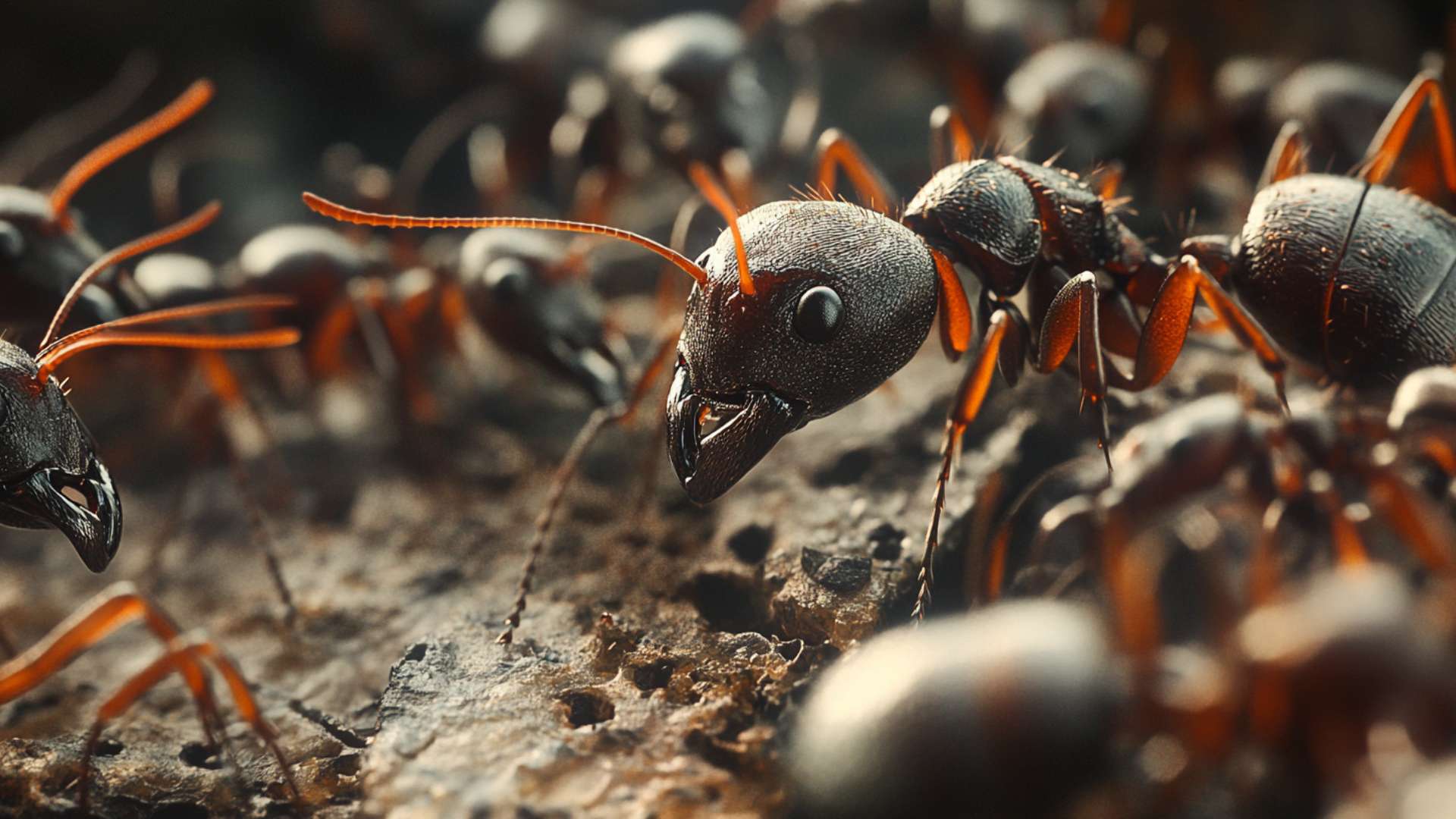Ants, those tiny creatures that scurry around tirelessly in search of food, are more fascinating than meets the eye. With their highly organized societies and complex behaviors, they have captivated human curiosity for centuries.
But within this world of industrious insects, there exists a figure of utmost importance—the queen ant. In this article, we will delve into the enchanting world of ants and explore what makes the queen ant so vital to the colony’s survival.
Fascinating World of Ants

Ants belong to the insect family Formicidae and are known for their remarkable social structures. These tiny creatures live in colonies that can range from a few hundred to millions of individuals. Within these colonies, each ant has a specific role and responsibility to the new colony to ensure its success.
Worker ants form the bulk of the colony and take care of various tasks such as foraging for food, maintaining the nest, caring for larvae, and defending birth colony against intruders. Male ants play a crucial role in reproduction; their sole purpose is to mate with future queens from other colonies during a magical event called nuptial flight.
Importance of the Queen Ant
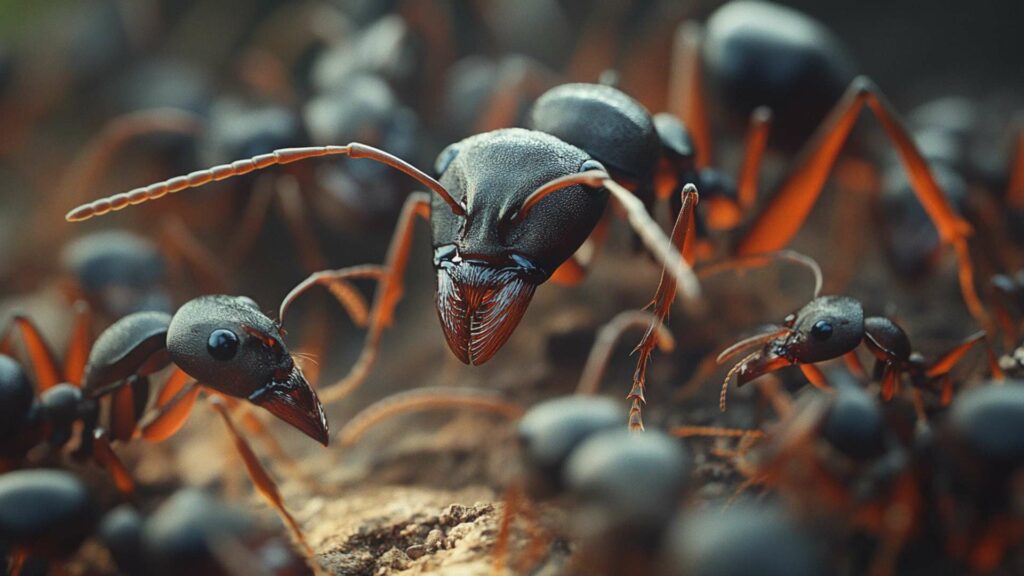
The queen ant reigns supreme within an ant colony. She is not only physically distinct but also holds immense significance for the colony’s survival and growth.
The primary function of the queen is reproduction – her ability to produce thousands of eggs per day ensures continuous population growth within the colony. Identifying the queen ant is crucial because she possesses unique features that set her apart from worker ants.
The size difference stands out immediately; queens are larger than worker ants in most species. Their elongated body shape and darker coloration further help distinguish them from others in their community.
Without a queen ant leading them, worker ants would lack direction and purpose. The continued presence of a fertile queen guarantees stability and ensures the survival of the important ant colony.
Interestingly, in some ant species, more than one queen can coexist peacefully within a single nest, which results in even greater productivity and expansion. Intriguingly, the queen’s royal status does not end with her reproductive capabilities.
She is one queen who has an extended lifespan compared to other members of the colony. While worker ants typically live for a few months, queens can survive for several years or even decades.
This longevity allows them to outlive most others and guide their colonies through generations of ants. As we embark on this journey through the realm of ants, prepare to be amazed by the extraordinary facts surrounding the queen ant and her vital role in sustaining these incredible insect societies.
General appearance of a queen ant
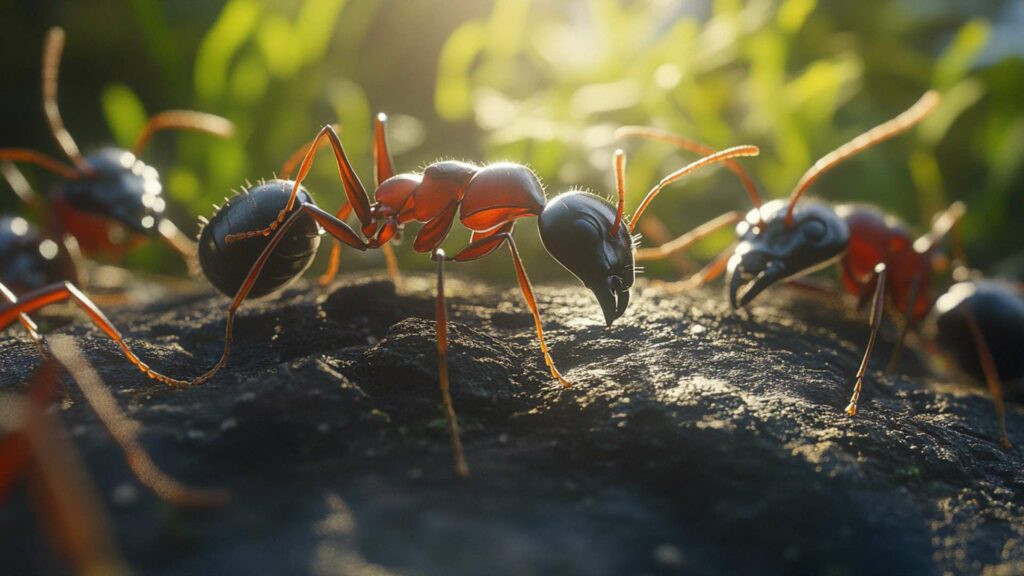
Size and shape
When it comes to size, the queen ant certainly reigns supreme in the ant kingdom. She is significantly larger than her many worker ant companions, standing out with an impressive stature. While worker ants are typically tiny and inconspicuous, the queen commands attention with her noticeable size.
The contrast between the queen and worker ants is remarkable – she can be up to several times larger than the average workers bustling about the colony. Additionally, one of the defining characteristics of a queen ant is her distinctive elongated body shape.
Unlike the more compact bodies of worker ants, queens possess elongated wings and abdomens that set them apart instantly. Picture a regal figure gliding through her realm with grace and poise – that’s what a queen ant embodies.
Coloration and markings
Queen ants exhibit a range of coloration and markings that may vary across different species. However, one common trait among queen ants from various species is their darker color compared to their worker counterparts.
The queens tend to have richer pigmentation which gives them an air of authority amidst their lighter-colored subjects. The specific markings on a queen ant can also differ depending on the species.
Some may have distinct patterns or striations on their exoskeletons, while others might display unique spots or lines along their bodies. These variations in coloration and markings provide researchers with valuable insights into identifying different species and understanding their evolutionary traits.
Intriguingly, these distinguishing features not only help us identify a queen ant but also play an essential role within the intricate social structure of an ant colony. By having distinct physical characteristics separate from other ants in the nest, queens assert themselves as crucial figures in maintaining order and ensuring reproductive success for future generations.
Throughout time as we observe these amazing creatures, we discover more fascinating facts about what makes a queen ant truly remarkable. From their size and shape to their coloration and markings, these regal rulers of the ant world never cease to captivate us with their unique appearance.
Head and Antennae Features
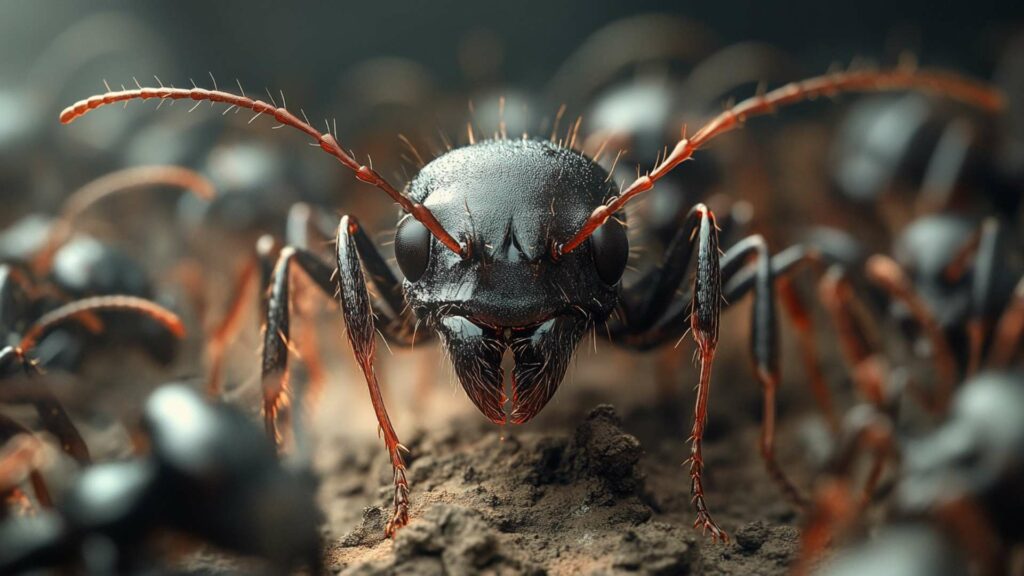
Mandibles and Jaws: Used for Feeding and Defense
When you try to identify the queen of a queen ant, one of the first things you’ll notice is her impressive mandibles. These jaws are not only used for chewing and consuming food but also for defending herself and her offspring.
The mandibles of a queen ant are much stronger and more developed compared to those of worker ants. This extra strength allows her to take on larger prey, protect her items, or fend off potential threats.
Antennae Characteristics: Longer than Those of Workers, Segmented with a Distinct Elbow Joint
The antennae of a queen ant are another distinguishing feature that helps in identifying her. They are noticeably longer than the antennae of worker ants. These sensory organs serve various functions, such as detecting pheromones released by other ants or providing tactile information about the environment.
The antennae consist of several segments connected by joints. What makes them even more fascinating is the distinct elbow joint that can be observed when closely examining the queen ant’s head.
This joint allows flexibility in movement, enabling the queen to navigate through narrow passages within the nest or while foraging. It’s important to note that depending on the species, there may be slight variations in head shape and antenna characteristics among queen ants.
In addition to their role in identifying a queen ant, these head and antenna features play crucial roles in her survival, reproduction, communication with other ants and colony members, and overall success as the matriarch. Overall, these distinguishing traits found in a queen ant’s head and antennas make them stand out from worker ants within their colonies.
Thorax and Abdomen Details
Thorax Structure
The thorax of a queen ant is an intriguing part of her anatomy. It is composed of three distinct segments: the prothorax, mesothorax, and metathorax. These segments are connected to each other in a way that enables the queen ant’s body to move with remarkable agility.
The thorax is the central part of her body that supports her six legs and allows her to carry out various tasks within the colony. One remarkable feature of the thorax is its connection to the head through a narrow waist called the petiole.
This petiole acts as a bridge between the thorax and the rest of the head, allowing for flexibility and freedom of movement. It’s like a tiny connector joint that facilitates coordination between different body parts.
Abdomen Features
The abdomen of a queen ant is strikingly different from that of worker ants in several ways. First and foremost, it is larger in size compared to their diminutive counterparts.
This larger abdomen serves an important purpose: it houses specialized reproductive organs unique to queen ants. Within this enlarged abdomen, female worker ants may notice small stubs known as wing pads, which indicate that these individuals are future queens ready for their nuptial flight.
These wing pads will eventually develop into fully functional wings during mating season when they take flight to find suitable mates. Additionally, this enlarged abdomen plays a crucial role in egg production.
Queen ants are prolific egg-layers; they have an impressive capacity to produce thousands of eggs per day! Their reproductive abilities are vital for colony growth and sustainability since these eggs eventually give rise to new generations of worker ants or future queens who will establish their own colonies one day.
Understanding the thorax and abdomen details helps us appreciate the intricate anatomy of a queen ant. The thorax’s three segments, along with the petiole connecting it to the head, provide flexibility and coordination for the queen ant’s movements.
Meanwhile, the larger abdomen distinguishes her from worker ants and houses specialized reproductive organs responsible for laying eggs and ensuring the continuity of her own colony. These anatomical features contribute to the remarkable nature of queen ants within their intricate social structure.
Reproductive capabilities
Mating process
Nuptial flight – a mid-air affair
When it comes to the world of ants, reproduction is a fascinating topic. Unlike many other species of insects, queen ants have the remarkable ability to mate in mid-air during what is known as a nuptial flight. This incredible phenomenon occurs when mature queens and male ants take to the skies in search of potential mates.
The purpose of this airborne courtship dance is to ensure genetic diversity and the survival of future queens. During a nuptial flight, male ants swarm around queen ants, competing for the chance to fly up to mate with them.
This aerial ballet showcases nature’s extraordinary spectacle as thousands, and sometimes millions, of these tiny creatures fill the air with their buzzing wings. While many male ants perish during this intense competition for mating rights, those who succeed in winning over a queen will have fulfilled their own purpose within the grand scheme of reproduction.
Mate with multiple males for genetic diversity
One fascinating aspect of queen ant reproduction is their tendency to mate with multiple males. By engaging in copulation with only males or several partners, queen ants ensure genetic diversity within their colonies. This practice helps strengthen their offspring’s ability to adapt to changing environmental conditions and increases overall colony resilience.
Through these multiple matings, each male ant contributes his own unique set of genes into the mix. The resulting genetic variation provides an advantageous edge for future generations by widening the gene pool from which natural selection can act upon.
Egg-laying abilities
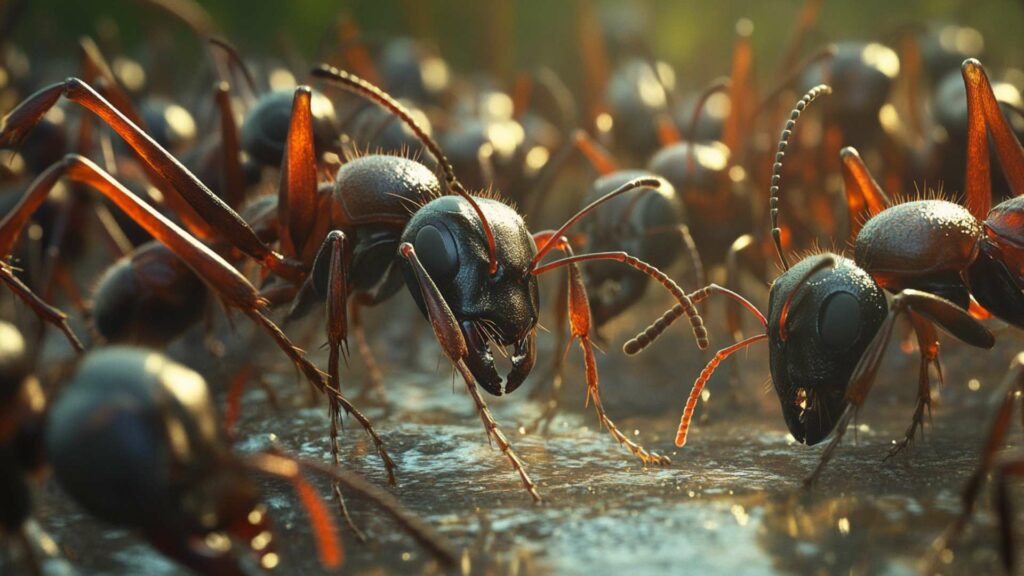
Produce thousands of eggs per day – an astonishing feat
The egg-laying abilities possessed by queen ants are truly awe-inspiring. These remarkable creatures can produce thousands of eggs every single day!
Such fecundity allows them to be responsible for colony growth and sustainability. Within the enlarged thorax and abdomen of a queen ant, specialized reproductive organs are at work.
These organs enable them to produce eggs continuously throughout their lives. This constant stream of first generation offspring ensures the replenishment of the colony’s workforce, as well as provides potential future queens to establish new colonies.
It is important to note that while queen ants possess this incredible ability to produce eggs, they rely on the female worker ants for food and other necessities. The queen’s primary role is reproductive, while the worker ants carry out all other essential tasks vital for the survival of the colony.
Queen ants’ reproductive capabilities are nothing short of astonishing. From engaging in mid-air mating during nuptial flights to mating with multiple males for genetic diversity, these remarkable creatures have evolved unique strategies to produce offspring and ensure their colonies thrive.
Their ability to produce thousands of eggs per day contributes significantly to colony growth and sustainability, cementing their crucial role as multiple queens within ant societies. So next time you encounter an ant nest bustling with activity, remember that behind it all lies a powerful queen tirelessly producing eggs and leading her colony towards a prosperous future.
Longevity and Lifespan: Queen’s Extended Reign
A Queen’s Royal Legacy
In the bustling world of ants, where the hierarchy defines their social structure, the queen ant holds a position of utmost importance. Not only does she possess a remarkable appearance, as we have explored in previous sections, but her reign is known for its remarkable longevity.
Unlike her worker counterparts who typically live for several months to a few years, a queen ant can reign over her colony for several years or even decades – truly an awe-inspiring feat! Her extended lifespan is one of the key factors contributing to the success and sustainability of an ant colony.
The Queen’s Secret to Longevity
So, how does a queen ant manage to outlive most other members within the colony? The answer lies in her physiological adaptations and unique reproductive capabilities.
While worker ants dedicate their lives to serving the needs of only members of the colony, ensuring its survival and growth, the queen’s primary role is reproduction. She spends much of her life laying eggs and fostering generations to come.
The Circle of Life: Egg-laying and Succession
Within an ant nest, a queen ant has small stubs called spermatheca that store sperm from mating with male drones during nuptial flights. This strategic storage allows her to lay thousands of eggs per day throughout her lifetime.
These eggs hatch into larvae that eventually develop into worker ants or future queens. Interestingly, when it comes time for new queens to emerge and lay eggs, they are often nurtured in specific chambers within the nest until they are ready to venture out on their own.
Ensuring Colony Prosperity
The prolonged lifespan of a queen ant ensures not only her own legacy but also that of the entire colony. By producing large numbers of offspring over an extended period, she guarantees continuity and genetic diversity within the ant colony. This robustness is crucial for adapting to changes in the environment, encountering other ant colonies, and maintaining the vitality of the ant species as a whole.
Conclusion
Deciphering what a queen ant looks like goes beyond merely identifying a larger-sized ant with distinctive features such as an elongated body and darker coloration. The queen’s role as the ultimate matriarch of an ant colony unveils her extraordinary longevity, often spanning multiple years or even decades. With her remarkable ability to lay thousands of eggs and ensure the survival of future generations, she ensures not only her own reign but also perpetuates the prosperity of the entire colony.
The world of ants holds many wonders, and understanding what a queen ant looks like is just the beginning of unraveling their captivating lives. So let us marvel at these two princesses of ants who rule their own colonies with grace and resilience!
Dissuade Ants with D-Termination: Las Vegas’ Top Pest Control Choice!
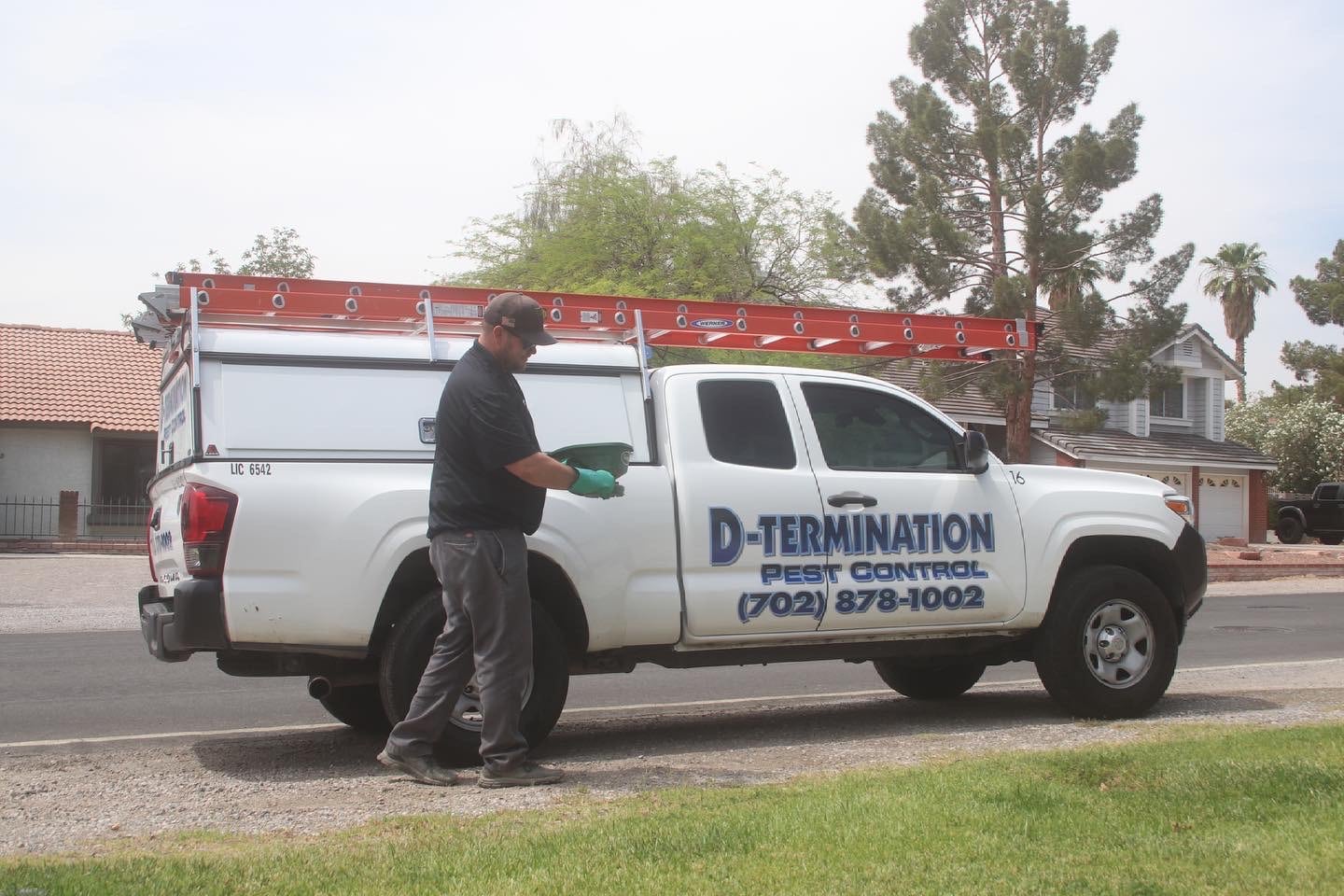
If you’re dealing with ant problems, D-Termination is your solution. Our skilled team excels at deterring ants, rejuvenating cleanliness, and preserving the integrity of your space. Bid farewell to ants—opt for D-Termination for highly effective pest control today!
Reach out to us at 702-919-6310 or visit dtermination.com to schedule your ant control service and regain your space from these unwanted pests.
Frequently Asked Questions:
Queen ants are usually larger with a distinctive body shape, and they’re often found inside the nest.
Queen ants are not commonly seen outside the nest, making their sightings rare.
Queen ants typically stay within the nest and are not frequently found outside.
If you catch a queen ant, it can be used to start a new ant colony if you have the necessary equipment and knowledge.

